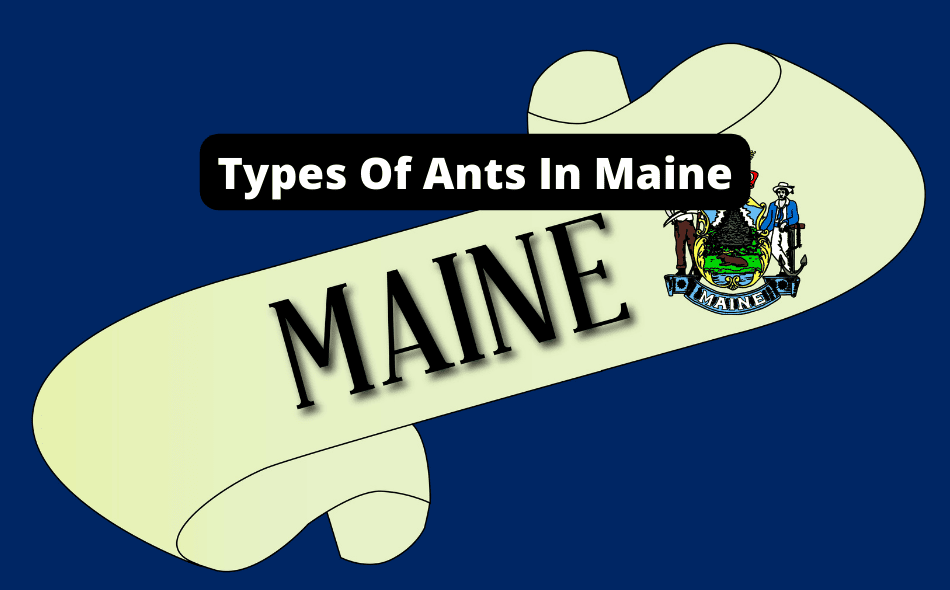Ants can be found almost everywhere in the world, but the type of ants will differ in each place.
Maine, located in the northeastern region of the United States, is known for its rugged coastline, lighthouses, and vast forests.
However, we cannot forget to mention the state’s famous lobster industry, which provides some of the freshest seafood in the country.
Additionally, Maine is home to Acadia National Park, a stunning natural wonderland with breathtaking views of the Atlantic Ocean and the surrounding mountains. And let’s not forget about the state’s legendary fall foliage, which draws visitors worldwide to witness the vibrant display of red, orange, and gold leaves.
Overall, Maine is a unique and beautiful state with tons to offer for nature enthusiasts, seafood lovers, and anyone seeking a peaceful escape from the hustle and bustle of city life.
While all of this is nice, we can’t forget the cool ants that are in Maine. These ants listed below would be perfect to start your ant-keeping journey, as they’re well-adjusted to Maine’s humidity, water, and temperature!
Types Of Ants In Maine
Maine is home to many different ants; these include Acrobat Ants, Allegheny Mound Ants, Black Carpenter Ants, Carpenter Ants, Citronella Ants, Cornfield Ants, Crazy Ants, European Fire Ants, False Honey Ants, Little Black Ants, Odorous House Ants, Pavement Ants, Pharaoh Ants, and Thief Ants.
Allegheny Mound Ants
An American ant species that construct massive mounds are known as the Allegheny mound ant.
These ants are composed of an abdomen and head that are crimson colored, dark brown and black stomach and legs.

While these ants look very similar to carpenter ants, the dark legs and huge mounds on the ground indicate that these are not carpenter ants.
These ants reproduce pretty quickly due to them being polygynous.
The eggs laid by the multiple queens develop into more worker ants or queens.
The sizes of the workers range from 3.1 – 6.5 mm, while the queen is much bigger, measuring up to 12.7 mm.
Allegheny mound ants build their nests throughout pastures, forested regions, and meadows.
They also set up nests on lawns or parks in urban and rural settings.
The workers graze on terraces and balconies but usually do not enter residences.
Allegheny Mound Ants are carbohydrate lovers, consuming sugary fluids, honeydew made by aphids, sap from trees, and sometimes other insects.
The workers will protect aphids who make them honeydew, just like carpenter ants.
These ants can be disastrous for businesses like farms and greenhouses.
These insects will kill nearby trees, vegetation, and structures shading the mound to keep the mound in the sun.
To do this, they bite many holes into the bark and continuously spray their formic acid into the hole.
Eventually, this kills and knocks over whatever was shading the mound.
These ants are very aggressive.
Since their bite comes with formic acid, these ants will hurt if bitten.
Eastern Black Carpenter Ant
Black carpenter ants are known to leave pheromones (scent gland) traces as they seek food at considerable distances of upwards of 100 yards (91 meters) from their nest.
They must hunt this far away from their homes because so many ants can live in a single nest.
The worker’s loud crackling noise makes it possible to identify these huge nests even in the dark.
Although the black carpenters cannot cause extreme harm, the big workers may deliver a hurtful bite.
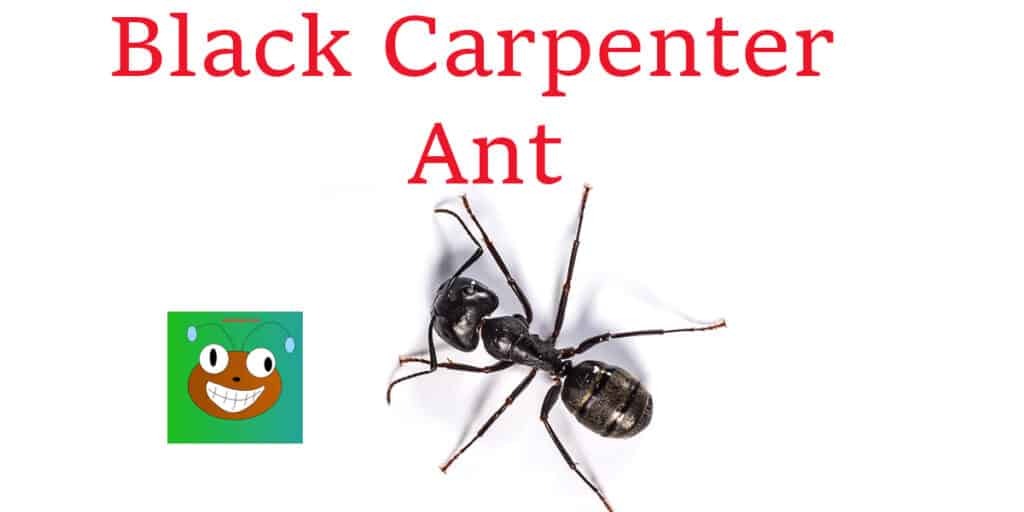
When biting, the black carpenter ant is known to spray formic acid, making the bite hurt just a bit more.
Aphids are cared for by worker carpenter ants, who raise them. In return, the aphids spit out honeydew that the black carpenter ant enjoys and brings back to the nest.
This isn’t all they eat; foragers consume plant liquids and other bugs and insects.
Black Carpenter ants build their nests in tree stumps and other types of wood. While this does promote decomposition, which is advantageous for the environment, the overall structural damage that black carpenter ants cause is extensive.
These ants are known to build nests in homes and abandoned barns, creating havoc for homeowners.
Carpenter Ant
Carpenter ants got their name because they dig wood to make their nests, creating neat tunnels within the wood.
These ants will only chew and burrow through the wood to build nests; Interestingly, they do not consume wood.
Carpenter ants’ length ranges from 12 to 25 mm depending on the species.

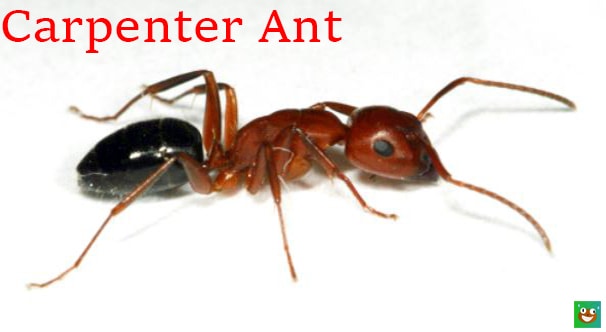
Carpenter ants that are black are frequent pests, but these insects can also be all-black, all-red, or all-brown.
When mature, the black western carpenter ants colony has ten to twenty thousand workers.
Incredibly, some big colonies have more than fifty thousand ants.
In most territories, there is only one active, wingless Queen. The colony must be older than two years before the production of swarmers takes place (potential new queens).
Instead, swarmers are produced the year before and kept in the nest during winter in preparation for the ensuing years’ dispersal.
In the east of the US, swarmers arrive from May through August, whereas in the west, they appear from February till June.
Citronella Ant
The hue of citronella ants ranges from yellow to yellowish-brown. Workers vary about an inch in length, and queens can reach lengths of a little more.
If seen from the front, their segmented bodies are irregularly rounded. Citronella ants get their name due to the lemon or citrus scent they release when squashed.

Citronella ants are mostly found at night and rarely spotted during the daytime.
Citronella ants build their nests outside in damp soil near a house s base, below concrete blocks, around logs, and under dead or rotting trees.
In addition, the ants will build their nests in homes with wet spots, such as behind bathroom walls and beneath kitchen and bathroom flooring.
Honeydew secreted by insects that dwell underground and eat plant roots is the primary food source for citronella workers.
As a result, they rarely, if ever, consume food from households.
Cornfield Ant
Small, light, or dark brown, the Cornfield Ant is a common ant found outside in meadows and cornfields.
In addition to these ants mainly breeding around decaying logs or trunks, you may find eggs in the ground behind big stones, bricks, pavements, etc.
Nevertheless, the American kind is more closely related to decaying tree trunks, logs, limbs, and dense fallen leaves, as seen in forest environments (in the rainforest).
This is because there is more excellent shade. As a result, the Lawn Ant is another name that is sometimes used to classify these ants. Workers are 2.5-4mm in size, with males ranging from 3-4.5mm. The queens are usually bigger, around 4-9m.
Cornfield ants consume sweets, mainly honeydew, produced by aphids, microscopic bugs, and other insects.
Although they occasionally enter houses for nourishment, they seldom build their nests inside.
Cornfield ants are found almost everywhere in the United States, except in the far southern or southwest regions.
Some people believe the cornfield ant is the most common insect on the continent.
Crazy Ant
The Gulf Coast area has recently been overrun by the golden crazy ant, also known as Nylanderia fulva.
These American species thrive in unaltered natural settings and have been impacted by human habitation and pollution.
Infestations discovered in Houston circa 2002 are now dispersed and may be found along the Gulf Coast and the Hill Country to the northwest.
The diameter of a single infestation can measure kilometers, and they are approximately 1/8 of an inch in size.

In the areas where these ants establish themselves, they expand into incredibly dense colonies, displacing local ants and numerous arthropods, including the foreign fire ant which came earlier.
Additionally, these ants pose a hazard to all other species.
The success of creatures that need nesting sites undoubtedly decreases as the invertebrate food base shrinks.
Furthermore, because of the ant’s immense population, their own lives will be directly impacted.
The decline in the invertebrate food source affects everyone in the region, including the colony.
Little Black Ant
The little black ant is native to North America.
Known for their lustrous black hue, the workers are 1 – 2 mm long, and the Queen is 4 – 5 mm in size.
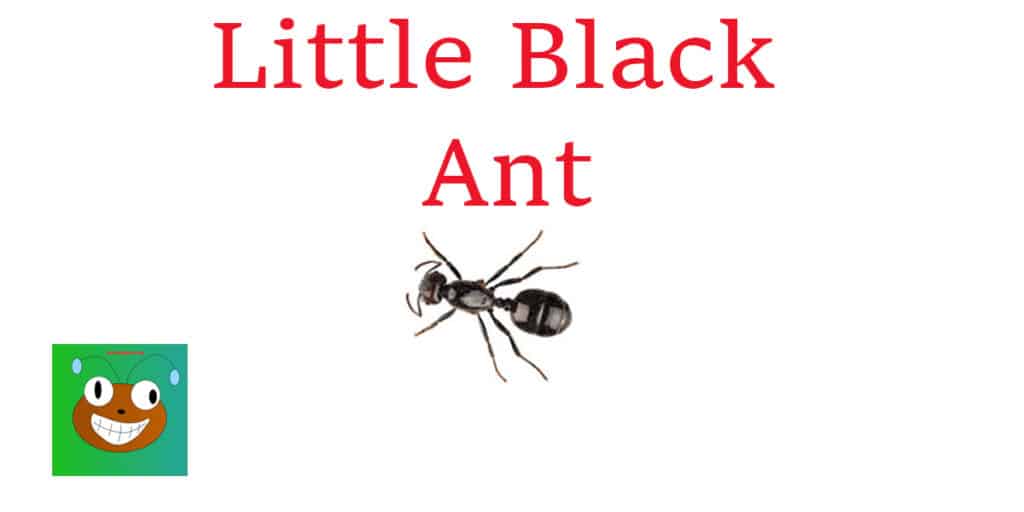
A colony may have more than one Queen because it’s a polygynous species.
A nest typically has a few hundred workers, a modest size.
These scavengers, known as Monomorium minimum, can eat anything, including dead insects and bird droppings.
Some of their favorite insects to eat are fall webworm larvae and codling moth caterpillars.
Additionally, they tend to collect honeydew insects like the soybean aphid. Although they prefer to nest on earth mounds, they may scan for other homes with ease of access.
Queens and males execute the nuptial flight, bonding in midair, mostly in summertime.
The males pass away soon after. Every Queen builds a new nest, removes her wings, then lays eggs.
Since this colony is polygynous, expect more queens shortly after. It takes around a month for an egg to mature into an adult.
Odorous House Ant
The worker-odorous house ants are around 3mm long and black to dark brown.
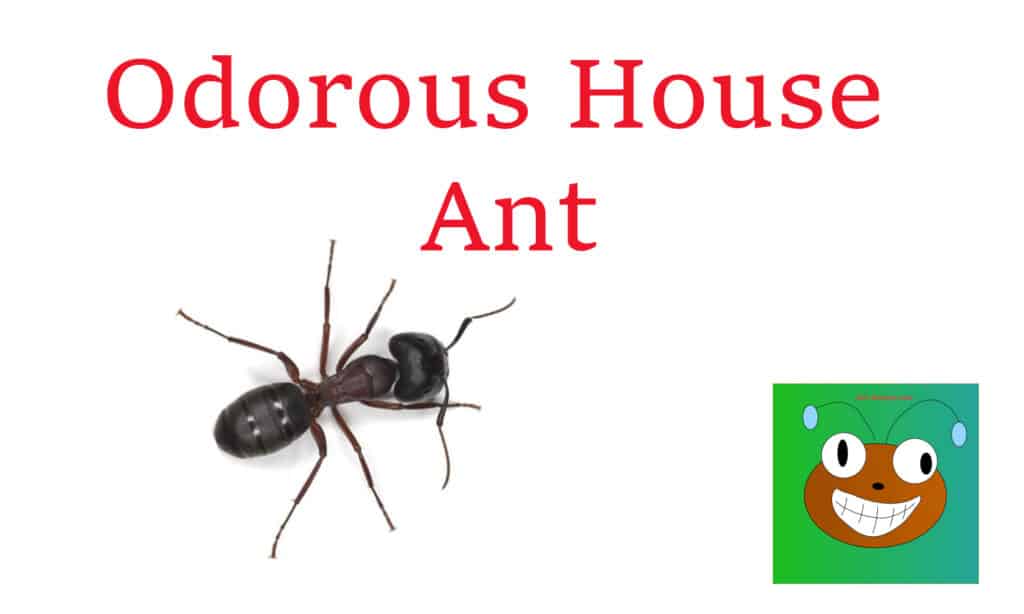
Additionally, they have antennae that resemble a long stick.
Crushed, odorous house ants produce a pungent, rotten coconut-like stench that gives these insects their name.
Odorous house ants build their nests indoors next to moist areas, such as heaters, heater cavities along hot water pipes, under leaking fixtures, and on termite-damaged wood.
Outside, odorous ants are frequently discovered on bare soil or beneath firewood piles. Odorous house ants enjoy eating sweets and particularly enjoy consuming honeydew.
Occasionally, they eat other things, such as pet food or insects. Approximately tri-monthly, they often relocate their nests because of rain.
They create new colonies following mating flights at the end of spring and summer.
Colonies are also split by the budding process, in which a queen leaves her nest with some workers to start a new colony elsewhere.
Pavement Ant
The head and thorax of pavement ants are marked with grooves, the thorax being the only part of the body-bearing spines.
Their size is usually between 2.5 and 3 mm in length.
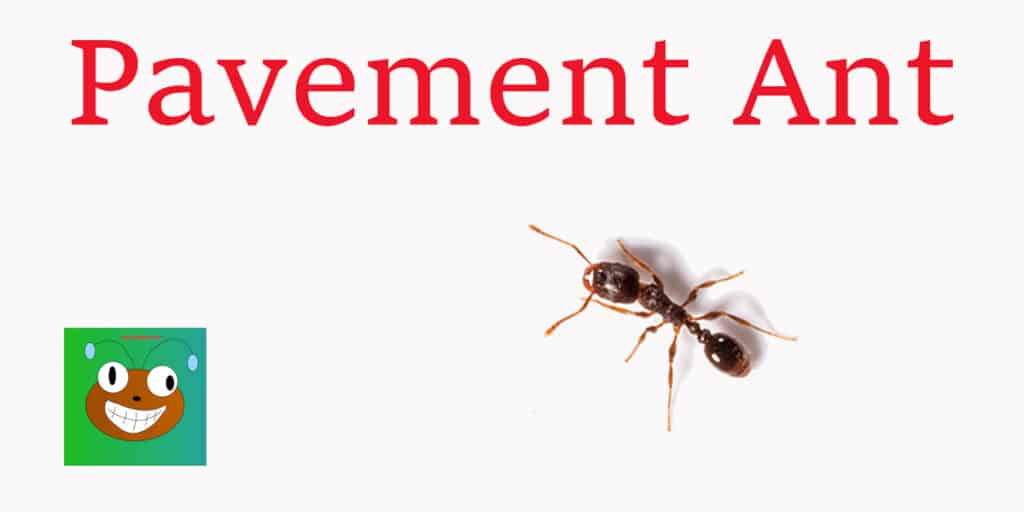
Pavement ants get their name because they typically make their nests under roadways, building foundations, and sidewalks.
Therefore, an area of disturbed soil near a paved surface is likely the result of pavement ant activity. Pavement ants may build their nests inside buildings near a heat source, mainly during winter.
These trailing ants consume many items, including honeydew from aphids, oily foods, seeds, and dead insects. Pavement ant colonies include up to 4,000 workers comprising several queens.
The queens are much bigger than the workers, going upwards of 9 mm in length.
The drones and young queens searching for partners are frequently spotted on nuptial flights during the end of spring and the start of summer. Drones and queens that reproduce have wings.
Pharaoh Ant
Another smaller and at about 2.4 mm (1/16 Inches), and interestingly the males and worker ants are actually the same size (not the Queen).
This ant can quickly become a nightmare if it infests your home, as it can survive even the most advanced household pest control attempts.

These ants will eat everything and are well known for infesting hospitals and other large corporate buildings that offer a cafeteria.
Because these ants don’t need soil or other substrates to create nests, they can infiltrate a building and start building out a home anywhere.
These ants do not care where they put their nest and have been seen nesting in everything from electrical wiring to underground sewage systems.
A unique (and sad) fact about Pharaoh Ants is that they have been caught feeding on the flesh of burn victims and are known for transferring diseases within hospitals.
Thief Ant
Among the tiniest species of domestic ants is the thief ant. They received their name because they tend to build their nests near or inside those of other ant colonies, which they subsequently raid for food and eggs.
Although they can have numerous queens and thousands of workers, their colonies are typically smaller than other ant species.
While they have different traits, thief ants and pharaoh ants can frequently be mistaken.
Due to their preference for fatty meals and sweet delights, these ants are sometimes called grease ants or sugar ants.
The majority of the Eastern US is home to this species.
The bodies of thief ants range in color from light brown to pale yellow. They are usually 1.5 mm – 2.2 mm in size. Their body is irregularly shaped, with their thorax appearing to lack spines. But their waist comprises two nodes.
